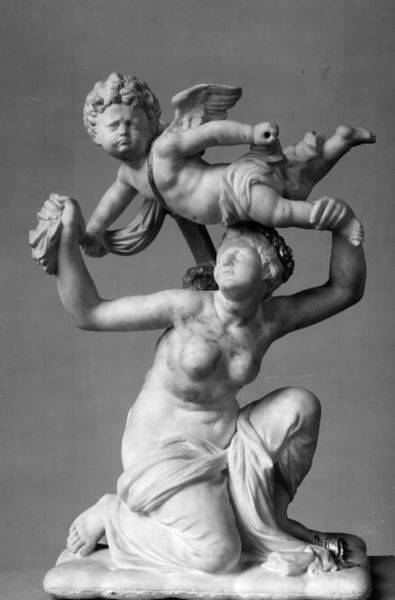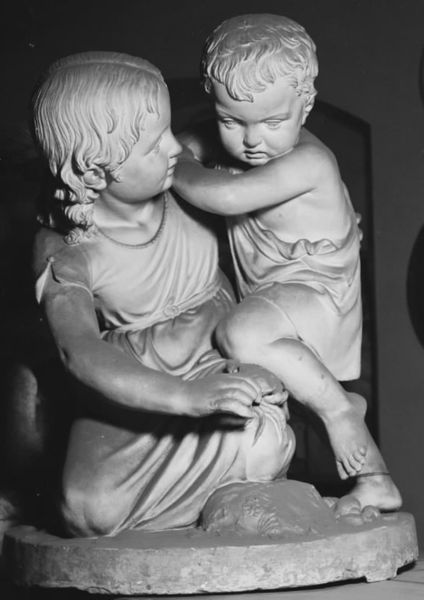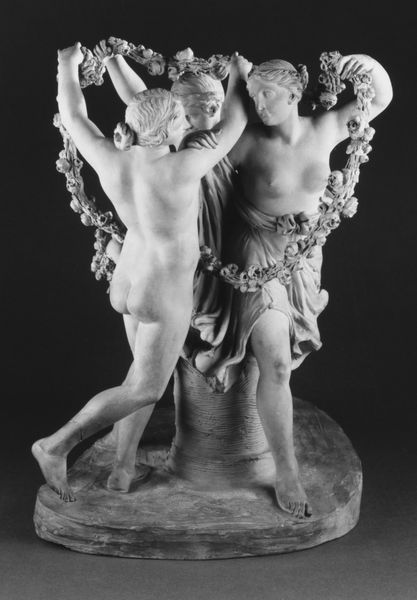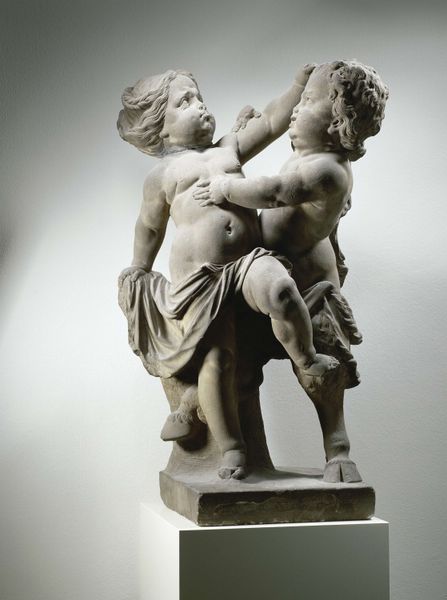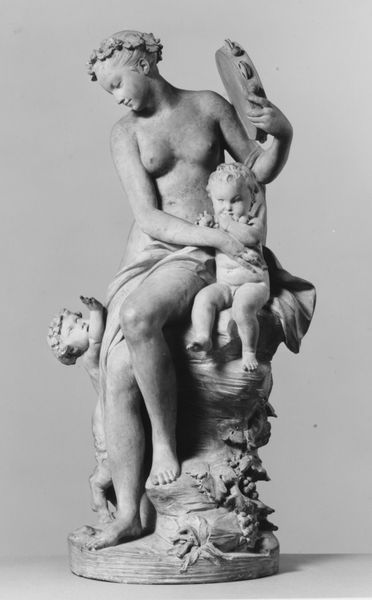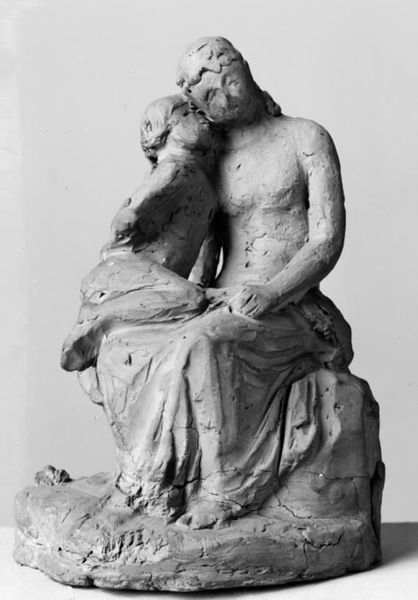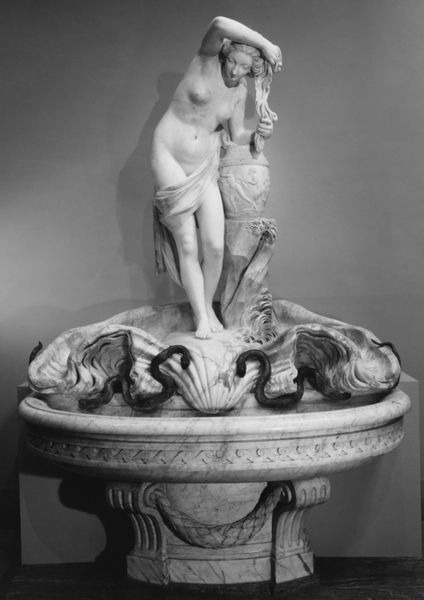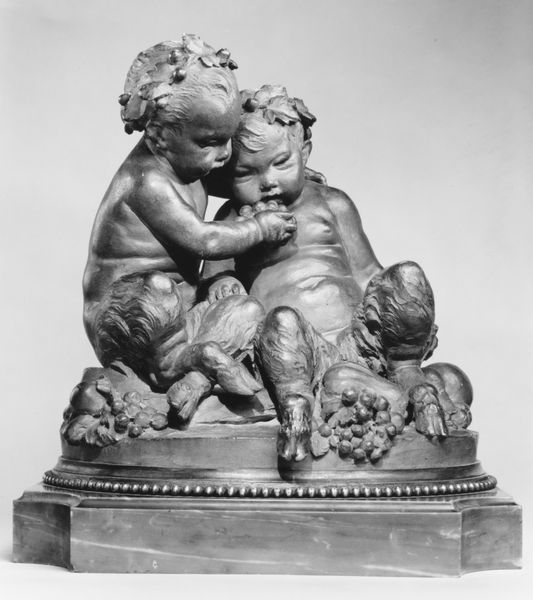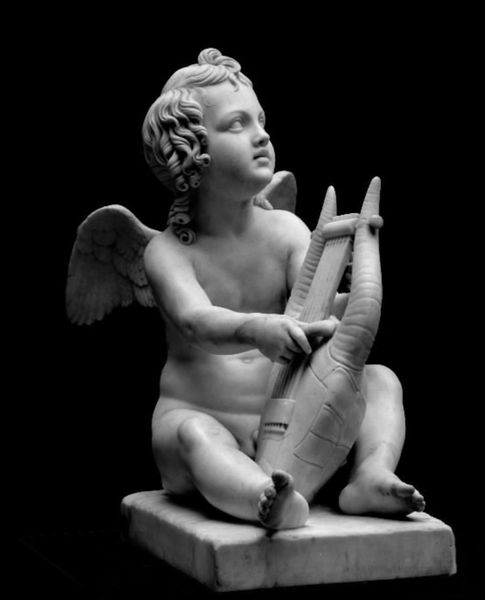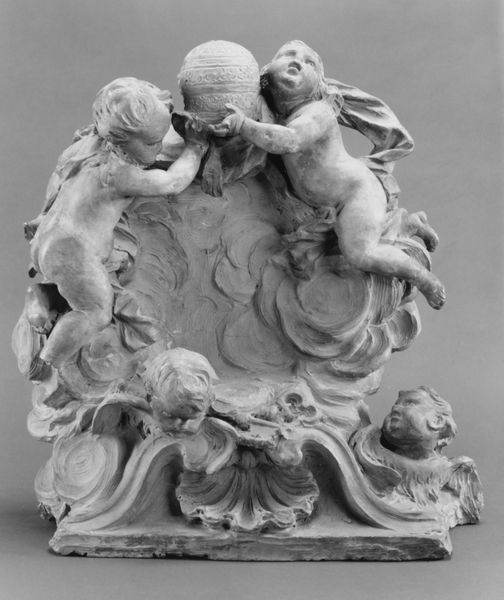
Dimensions: 85 cm (height) (Netto)
Curator: Ah, the charming “Amor og Bacchus” crafted in 1879 by W. Runeberg. The sculpture is housed here at the SMK, a delicate interplay rendered in marble. Editor: My first thought is, 'youthful excess.' It's both cloying and lovely, that adolescent intimacy. The smoothness of the marble…almost too perfect? Curator: The piece certainly romanticizes childhood, filtered through a neoclassical lens. Runeberg engages with the historical allegories of Cupid and Bacchus to explore themes of love and intoxication. What’s interesting to me is how these symbols interact, creating a space where youthful play borders on…something more knowing. Editor: Precisely! And that knowingness comes across through the material itself. Think about the labor involved in extracting, carving, and polishing this marble to achieve such an idealized, almost ethereal, quality. It’s a study in the politics of production! Marble was the ultimate luxury commodity in its time, shaping the narratives of wealth and prestige it visually conveys. Curator: Absolutely. Runeberg was positioning himself within the grand tradition of European sculpture, harking back to classical ideals of beauty and form while working during a time when ideas around art and empire were evolving rapidly. Consider who was commissioning these pieces and the narratives they sought to project through them. Editor: Exactly. It speaks to issues of social power and class. Consider how marble also physically endures—speaking to the desires of that owning class to be remembered! The sheer heft and density suggest something solid, enduring. And also the methods that had to be used for the production of the piece. Curator: It brings into sharp relief the relationship between classical themes and Romantic sensibility, particularly around how gender and sexuality were being coded and consumed within the artistic landscape. Editor: Thinking about it now, those cherubic figures embody more than mere innocence. They represent how artistic visions are intertwined with power structures—shaping aesthetic desires and solidifying the place of art itself as an object within material culture. Curator: A perspective which enables us to view art with historical rigor! Editor: Indeed. It's the textures, the histories, and the politics locked within that speak the loudest, if you listen.
Comments
No comments
Be the first to comment and join the conversation on the ultimate creative platform.
